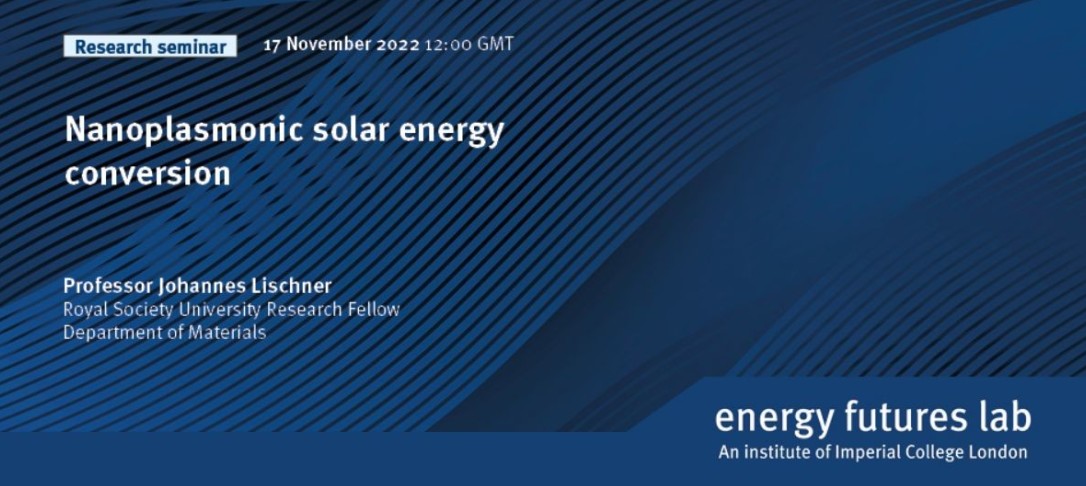
Nanoplasmonic solar energy conversion
Localized surface plasmons in metallic nanoparticles give rise to very strong light absorption. The decay of these excitations results in the generation of energetic or “hot” electrons and holes which can be harvested and harnessed for applications in photovoltaics, photocatalysis and light sensing. To optimize hot carrier production in devices, a detailed theoretical understanding of the relevant microscopic processes, including light-matter interactions, plasmon decay and hot electron thermalization, is needed. In my talk, I will describe a material-specific theory of hot-carrier generation in metallic nanoparticles which combines a classical description of the electromagnetic radiation with large-scale atomistic quantum-mechanical simulations. I will present results for hot carrier distributions in spherical nanoparticles of gold, silver and copper and discuss the relative importance of interband and intraband transitions as function of nanoparticle size. Finally, I will describe results for more complex systems, such as core-shell nanoparticles or “reactor” systems in which small catalytic nanoparticles are adsorbed to a larger plasmonic nanoparticles.
Johannes Lischner is currently a Reader in Theory and Simulation of Materials and a Royal Society University Research Fellow in the Department of Materials at Imperial College London.
He obtained a Ph.D. in theoretical physics from Cornell University in 2010 working in the group of Prof. Tomas Arias. From 2010 to 2014, he was a postdoctoral researcher at UC Berkeley and Lawrence Berkeley National Lab in the groups of Prof. Steven Louie and Prof. Marvin Cohen.
In his research, he studies the physical and chemical properties of materials using theoretical modelling approaches. Currently, much of his work is focused on nanomaterials and energy materials. For example, he is interested in understanding the properties of twisted bilayer materials, catalytic metal surfaces, plasmonic nanoparticles and defects. To learn about the properties of these materials, he employs a variety of modelling techniques ranging from quantum-mechanical approaches, such as many-body perturbation theory (GW/BSE method) or density-functional theory, to classical force fields and elastic continuum models.
About Energy Futures Lab
Energy Futures Lab is one of seven Global Institutes at Imperial College London. The institute was established to address global energy challenges by identifying and leading new opportunities to serve industry, government and society at large through high quality research, evidence and advocacy for positive change. The institute aims to promote energy innovation and advance systemic solutions for a sustainable energy future by bringing together the science, engineering and policy expertise at Imperial and fostering collaboration with a wide variety of external partners.